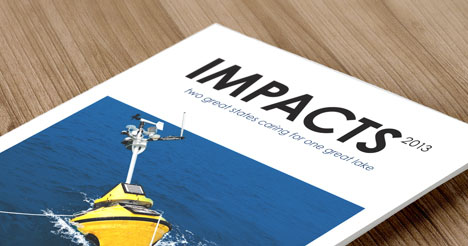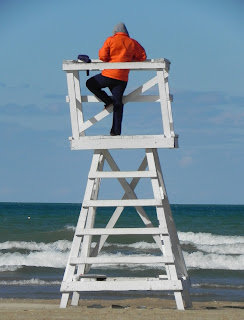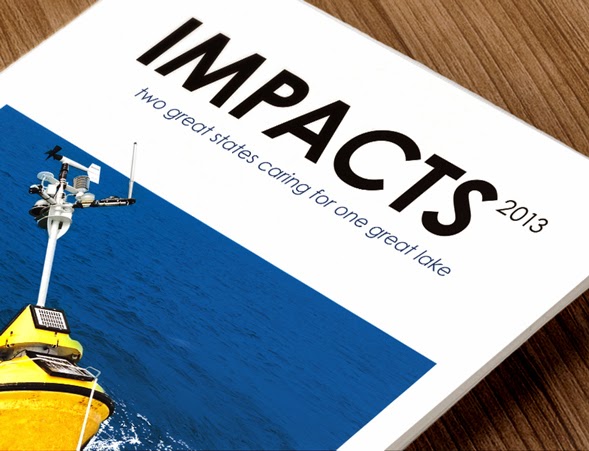 Lawn care decisions play a large role in local water quality and the health of aquatic wildlife. The fertilizers, pesticides, and other chemicals we put on our lawns can be washed into nearby lakes and rivers in stormwater runoff. Once there, these pollutants spur algae growth, clog gills, decrease resistance to disease, and suffocate eggs and newly hatched larvae.
Lawn care decisions play a large role in local water quality and the health of aquatic wildlife. The fertilizers, pesticides, and other chemicals we put on our lawns can be washed into nearby lakes and rivers in stormwater runoff. Once there, these pollutants spur algae growth, clog gills, decrease resistance to disease, and suffocate eggs and newly hatched larvae.
The IISG-led Lawn to Lake program continues to educate homeowners, landscapers, and master gardeners on natural lawn care practices that can improve soil health and protect water quality. The program works with community partners across the region to conduct training workshops and provide ‘how to’ resources for a range of audiences.
Lawn to Lake outreach has led to management changes on an estimated 22,415 lawn acres. These changes are expected to reduce the use of lawn care chemicals, including weed and feed, by more than 3 million pounds a year, protecting nearby aquatic ecosystems from chemical-laden runoff while fostering healthy lawns.
 To learn more about how IISG is empowering communities and individuals to secure a healthy environment, check out our 2013 program impacts.
To learn more about how IISG is empowering communities and individuals to secure a healthy environment, check out our 2013 program impacts.
Believe it or not, Indiana is a prime location for aquaculture industries due to its rich supply of raw materials for fish food and access to large markets. And as fish continue to be harvested from oceans and other water bodies at unsustainable rates, the role of aquaculture grows ever more vital.
This work has led to economic development not just in the aquaculture industry but in a variety of other sectors as well. Research has revealed that farm sales of aquaculture products in Indiana reached about $15 million in 2013, a nearly five-fold increase over 2005. Fish farming in the state supports 280 jobs, 169 directly in the aquaculture industry. Aquaculture generates $3.7 million labor income and $19.5 million added value. The industry output is valued at $23.6 million for a total value of $38 million with other supporting industries.
To learn more about how IISG is empowering communities and individuals to strengthen local environments and economies, check out our 2013 program impacts.
Illinois-Indiana Sea Grant’s work each year touches on a variety of critical water concerns, but the common goal is protecting and preserving Lake Michigan. Each year we look back at some of our successes from the previous year as a way to guide continuing efforts. Below are just a few of the highlights from last year.
 IISG helps keep over 12,000 pounds of medicine out of local water
IISG helps keep over 12,000 pounds of medicine out of local water
Research shows that pharmaceuticals impact water quality—the water we drink, bathe in, and use for recreation. Using the toilet or trash to dispose of medicine can put people, animals, and the environment at risk. To address this issue, in 2012 Illinois-Indiana Sea Grant partnered with law enforcement agencies and community groups to start 17 permanent medicine collection programs. IISG also assisted with single day collection events in six communities and helped promote the fall DEA collection program in 11 communities. IISG helped organize and promote these programs, wrote press releases, provided brochures, and purchased locked medicine collection boxes. As a result of these efforts, over 12,000 pounds of pills were properly disposed of through 17 permanent collection programs and six single-day events. The medicine was destroyed using high-heat incineration, reducing the potential for diversion or accidental poisonings and keeping the chemicals from polluting local water.
30 Illinois communities implement green infrastructure projects
In light of climate change predictions that indicate bigger storms and more flooding, managing urban stormwater will become increasingly critical in northeastern Illinois and throughout the state. But planning and implementing effective, forward-looking infrastructure can help protect communities and allow them to adapt to changing weather conditions. Illinois-Indiana Sea Grant was funded by Illinois EPA to study the standards and costs of green infrastructure as a possible replacement or supplement to conventional urban stormwater infrastructure. The study found that, on average, green infrastructure practices are just as effective as conventional stormwater infrastructure, and are less expensive. In 2012, the Illinois General Assembly established a $5 million discretionary fund to support green infrastructure projects in communities around the state, a strong start to helping these areas plan and prepare for potential weather extremes.
 Lawn care decisions play a large role in local water quality and the health of aquatic wildlife. The fertilizers, pesticides, and other chemicals we put on our lawns can be washed into nearby lakes and rivers in stormwater runoff. Once there, these pollutants spur algae growth, clog gills, decrease resistance to disease, and suffocate eggs and newly hatched larvae.
Lawn care decisions play a large role in local water quality and the health of aquatic wildlife. The fertilizers, pesticides, and other chemicals we put on our lawns can be washed into nearby lakes and rivers in stormwater runoff. Once there, these pollutants spur algae growth, clog gills, decrease resistance to disease, and suffocate eggs and newly hatched larvae.  To learn more about how IISG is empowering communities and individuals to secure a healthy environment, check out our 2013 program impacts.
To learn more about how IISG is empowering communities and individuals to secure a healthy environment, check out our 2013 program impacts. 


